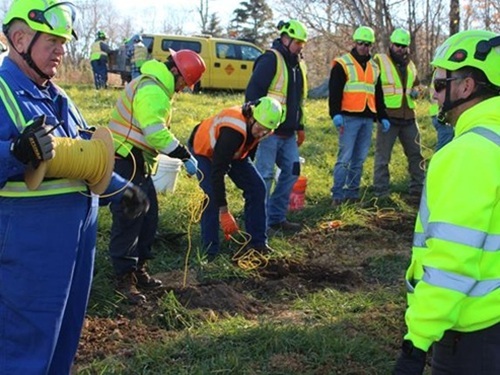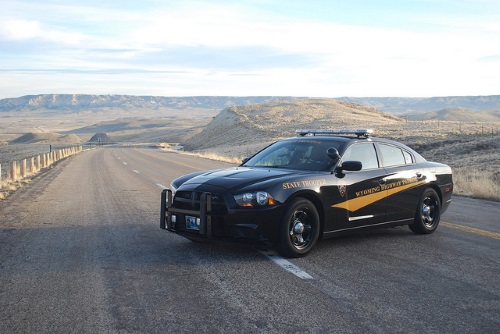The Wyoming Department of Transportation initiated a pilot test of connected vehicle technology on Oct. 30, with plans to install onboard communication units on about 100 of the department’s vehicles and about 300 private fleet vehicles, along with 75 roadside units on and around Interstate 80.
[Above photo from the Wyoming Highway Patrol.]
“This technology … will help keep the traveling public safer by giving them almost real-time information,” said WYDOT Director Bill Panos in a statement. “This cutting-edge technology will improve transportation along the I-80 corridor not only for Wyoming residents but for our commercial truck drivers who transport their goods within the state and nationally.”
WYDOT received a grant from USDOT three years ago to develop and participate in its Connected Vehicle Deployment Program. Wyoming is one of only three locations in the nation participating in USDOT’s program, alongside projects in New York City and Tampa, Florida.

Ali Ragan, WYDOT’s GIS/ITS project manager, added that the connected vehicle technology being tested will communicate road information and alerts to motorists in near real time. “The information collected and distributed through connected vehicles will provide better awareness for the entire transportation network,” he said. “The goal is to reduce the number of crashes, injuries and road closures on Interstate 80. Wyoming is proud to lead the way in the future of transportation safety.”
Depending on the situation, Ragan said the technology would either interact vehicle to vehicle, vehicle to roadside unit or roadside to vehicle.
For the vehicle-to-vehicle communications, a vehicle sends out a safety message and a nearby vehicle then receives it, allowing critical information to be shared in near real-time. For vehicle-to-infrastructure communications, a vehicle that has information on an incident sends it to the roadside unit, which then sends it to WYDOT’s Transportation Management Center or TMC.

The TMC can also send out alerts based on information collected from connected vehicles and other systems including weather stations and reports from maintenance employees to the road side unit, which is the roadside-to-vehicle communications piece.
“Connected vehicles are not autonomous and require an alert and active driver,” Ragan explained. “They provide situational awareness, allowing the driver to anticipate and react to changing road and weather conditions as well as traffic hazards.”
Visibility issues often become a problem during the winter in Wyoming with high winds that accompany a majority of the snow storms.

Tom DeHoff, a WYDOT District 1 district engineer, and Col. Kebin Haller of the Wyoming Highway Patrol, both said snow plows and highway patrol vehicles are often hit by other vehicles because of poor visibility. Those conditions also contribute to other crashes along the I-80 corridor.
“Our long-term goal is to adopt technology such as the connected vehicle that will help keep our WYDOT family and the traveling public safe,” DeHoff said. “I really think this technology will help us out and reduce crashes.”
 States
States
NCDOT Staff Participate in ‘Explosive’ Technical Training
December 19, 2025 States
States

